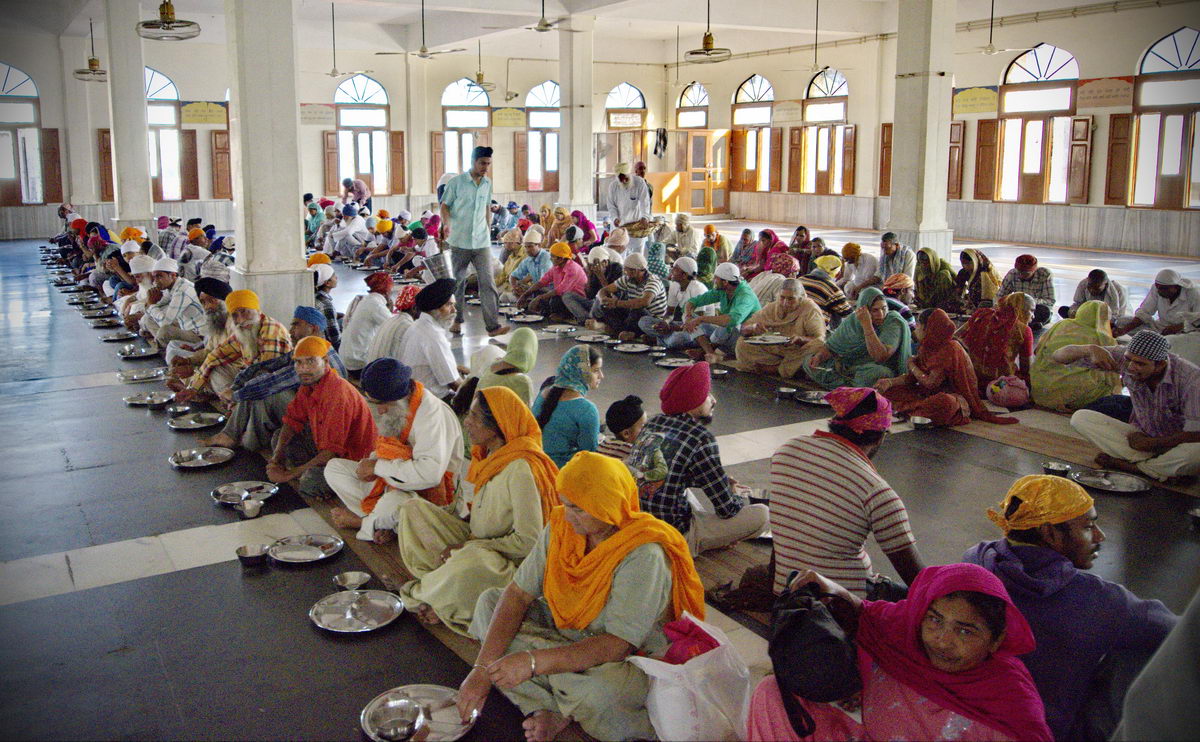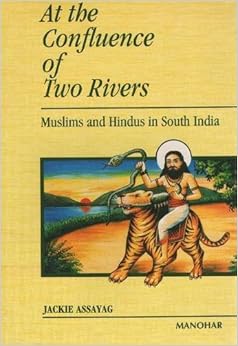“We need to discuss this whole Golf course thing …Isn't it a
good time to introduce high end tourism in Goa?”
“Those people probably are squatters who have been there for a few generations. In the grand scheme they don't matter. As long as they are offered viable alternative places what does it matter J?”
“Well, development must happen. It's inevitable….”
“Those people probably are squatters who have been there for a few generations. In the grand scheme they don't matter. As long as they are offered viable alternative places what does it matter J?”
“Well, development must happen. It's inevitable….”
These are extracts
from a response I elicited after posting on Facebook the reflections
of my colleague Albertina Almeida on the recent events in the village of Tiracol.
 What shocked me, and hence forms the basis
for this column, was the absolute disregard that these messages displayed to
fellow human beings. However, I need to underline that the sentiments should
not be construed as restricted to this one individual. Rather, they form part
of the mindset of a good portion of middle-class Goans on what constitutes development,
how it should be brought about, and what are the challenges to development in
Goa. It is even more important to challenge this mind-set because this
dismissal of the value of human beings is a part of the complex of ideas that
contemporary Hindutva rides on.
What shocked me, and hence forms the basis
for this column, was the absolute disregard that these messages displayed to
fellow human beings. However, I need to underline that the sentiments should
not be construed as restricted to this one individual. Rather, they form part
of the mindset of a good portion of middle-class Goans on what constitutes development,
how it should be brought about, and what are the challenges to development in
Goa. It is even more important to challenge this mind-set because this
dismissal of the value of human beings is a part of the complex of ideas that
contemporary Hindutva rides on. There seems to be a wide consensus on the
need for Goa to shift from the current mode of tourism. We are attracting the
wrong kinds of tourists, goes this consensus, either charter tourists from
Europe, or low-budget tourists from India. Instead, we are told, we should
focus our energies on high-end and “well-heeled” tourists. The problem,
however, is that no one really seems to know how to attract these high-end
tourists. The state government has presented some options, such as an
oceanarium, a ropeway across the Mandovi River and other such high-cost
physical infrastructure. To that extent, the author of the messages at the
start of this column seems to be of one mind with the state government.
There seems to be a wide consensus on the
need for Goa to shift from the current mode of tourism. We are attracting the
wrong kinds of tourists, goes this consensus, either charter tourists from
Europe, or low-budget tourists from India. Instead, we are told, we should
focus our energies on high-end and “well-heeled” tourists. The problem,
however, is that no one really seems to know how to attract these high-end
tourists. The state government has presented some options, such as an
oceanarium, a ropeway across the Mandovi River and other such high-cost
physical infrastructure. To that extent, the author of the messages at the
start of this column seems to be of one mind with the state government.
The problem with such schemes, however, is
that such methods often involve pushing people off the land that they occupy,
or, as the Tiracol case clearly demonstrates, occupying the lands that the
locals use to generate livelihoods. In addition, it also involves, as
Vivek Menezes pointed out in a recent op-ed, the violation of a number of
environmental norms. Both of these cause loud protests from concerned citizens
concerned that, rather than development, these projects will result in economic
and ecological impoverishment. This results in delays to the proposed projects.
It is little wonder then that proponents of this kind of
physical-infrastructure-heavy development see people as a threat that need to
be removed.
But is this the only way in which we can
generate a tourist economy that would attract these high-spending tourists?
Could we not think of a tourist economy that relies on investment in people and
social infrastructure instead?
 The following anecdote could possibly
answer this question. I was once outside the new building of the State Central
Library in Patto, Panjim and the sun was beating down fiercely. In this
merciless environment I was stopped by a group of Slavs (Russians, or Ukranians
I could not tell), looking for directions to the State Museum. It was clear
that they had walked all the way from either the bus-stand or Panjim. I felt
pity for them, for given my familiarity with the lacklustre state of the Museum,
I knew that theirs was to be a wasted trip. It was then that I realised how
misplaced so much of our thinking about tourism is. Where we often badmouth the
“Russians” who come to visit Goa, we are clueless to the fact that at least
some of them would have been willing to engage more substantially with Goa, and
Goans, if only state and society had provided them a means to do so.
The following anecdote could possibly
answer this question. I was once outside the new building of the State Central
Library in Patto, Panjim and the sun was beating down fiercely. In this
merciless environment I was stopped by a group of Slavs (Russians, or Ukranians
I could not tell), looking for directions to the State Museum. It was clear
that they had walked all the way from either the bus-stand or Panjim. I felt
pity for them, for given my familiarity with the lacklustre state of the Museum,
I knew that theirs was to be a wasted trip. It was then that I realised how
misplaced so much of our thinking about tourism is. Where we often badmouth the
“Russians” who come to visit Goa, we are clueless to the fact that at least
some of them would have been willing to engage more substantially with Goa, and
Goans, if only state and society had provided them a means to do so.
An investment in culture, in the form of a
museum and the training of curators and conservationists, in the form of a
state orchestra, a dance company, an opera house would perhaps demand lower
levels of investment from the state but would yield greater results because it
would be invested in people. As Goa’s lively traditions in tiatr and music
demonstrate there is already a base that would allow such investment to
multiply rapidly. An exposure to international currents in the various fields
would lay the foundations for more creative locals, and a more dynamic local
culture that would bring in exactly the kind of tourists that we today seem to
lack. But we could do this only if we took our own people seriously.
 And then there is this matter of referring
to the residents of Tiracol as “squatters”. This is not the first time that I
have encountered persons who are lower on the socio-economic scale, and
residing in potentially high-value property, being referred to as squatters. In
her
op-ed essay on the Santa Inez creek in Panjim, Amita Kanekar made
observations pertinent to the case in Tiracol. The persons living along the
banks of the creek are often referred to as squatters. Kanekar, however, observed
that these residents were in fact long-time residents of the area, being
mundkars of local bhatkars. “When the bhatkars sold their lands to real estate
developers, the mundkars were promised permanent homes elsewhere but given
temporary ones here on the creek’s edge”. She also pointed out that it now that
the bhatkars sold these lands to developers, these onetime residents were being
forced to leave. Calling these displaced tenants squatters, is just one way in
which their social and legal legitimacy is robbed from them.
And then there is this matter of referring
to the residents of Tiracol as “squatters”. This is not the first time that I
have encountered persons who are lower on the socio-economic scale, and
residing in potentially high-value property, being referred to as squatters. In
her
op-ed essay on the Santa Inez creek in Panjim, Amita Kanekar made
observations pertinent to the case in Tiracol. The persons living along the
banks of the creek are often referred to as squatters. Kanekar, however, observed
that these residents were in fact long-time residents of the area, being
mundkars of local bhatkars. “When the bhatkars sold their lands to real estate
developers, the mundkars were promised permanent homes elsewhere but given
temporary ones here on the creek’s edge”. She also pointed out that it now that
the bhatkars sold these lands to developers, these onetime residents were being
forced to leave. Calling these displaced tenants squatters, is just one way in
which their social and legal legitimacy is robbed from them.
While one hopes that the residents of
Tiracol are ensured justice and the damage done to the orchards they tend is
made right, there is a need for a larger debate. There is a need for us to
examine the manner in which our arguments about development privilege earlier
feudal relations. Pre-colonial and colonial period land relations were not
just. It is not just that one family should control hundreds, if not thousands,
of acres, while others do not have access to a few square metres. While I am
not making an argument for expropriation of lands from former landlords, I am
arguing that we cannot dismiss former tenants merely as squatters. The fruits
of their constant labour in tending to the orchards and fields are what made
the landlords rich. It is in recognition
of these labours that the law as it stands today recognises these people as
tenants, and recognises that they have certain rights. It behoves us to respect
these laws and not skew the debate to privilege a dehumanised development.
 The events in Tiracol also raise another
issue of vital importance. Given that the issue involves the sale of bhatcarial
rights and the question of the settlement of the rights of the tenants, there is
a need for us to inquire if those who purchase bhatcarial rights do not also
have to be held to a higher standard than someone who is merely purchasing a
smaller parcel of property. Reports indicate that Leading Hotels, the new
bhatcar of Tiracol, has sought to purchase the rights of the tenants in order
to have unrestricted access to the area. The price of these rights has varied from
Rs 120 per square metre, then Rs 200, and finally Rs 500 according to the capacities
of the individual tenants.
The events in Tiracol also raise another
issue of vital importance. Given that the issue involves the sale of bhatcarial
rights and the question of the settlement of the rights of the tenants, there is
a need for us to inquire if those who purchase bhatcarial rights do not also
have to be held to a higher standard than someone who is merely purchasing a
smaller parcel of property. Reports indicate that Leading Hotels, the new
bhatcar of Tiracol, has sought to purchase the rights of the tenants in order
to have unrestricted access to the area. The price of these rights has varied from
Rs 120 per square metre, then Rs 200, and finally Rs 500 according to the capacities
of the individual tenants.
It needs to be recognised that in such
circumstances as in Tiracol, though this would also apply to such projects as
Aldeia de Goa, the transaction is not a straightforward sale of property. The
person making the sale is not necessarily the canny operator in a speculative
market. Very often they are making what they see as the best of a situation.
The fact, however, may be that the money they received is just not sufficient
to take care of their future needs, largely because they failed to take into
consideration the kind of unaccounted support that the land provided them. Some
would argue that this is a private matter between two parties in a n
open-market transaction. I would argue otherwise. This is not a private matter
because very often the tenants are selling all they have, they may lack the
skills to manage the receipts of the transaction and eventually land up in
poverty. The creation of poverty is a public concern and impinges on our common
dream of development. As such, there is a need for us to recognize the
importance of articulating a rehabilitation policy where the interests of
tenants in those properties where prospective bhatcars seek to create an
unencumbered right to the property are taken care of.
There is one final argument that was made
in the message that deserves to be commented on. The individual who sent me the
message recognized that the residents of Tiracol need to be “offered viable
alternative places”. In many ways this individual articulated the seed of an
ideal rehabilitation policy. Indeed, land for land has been the claim of those
articulating the interests of displaced persons. They argue that money alone
cannot be a suitable compensation for displacement. Rather, suitable land must
be provided for the land that has been lost. The challenge, however, is that
such alternative land is very rarely, if ever, available. It is especially in recognition of this fact that we need to think more seriously, not merely of compensation, but rehabilitation, where the futures of these individuals, and a concern that they are not impoverished takes centre stage.
There is a reason why India has not
developed the way people expect and hope it would. It has not because
development has not as yet privileged people. Development will happen, and “well-heeled”
tourists will flow in, when we take people seriously, and invest in these
people, support their dreams and futures. Until then, we should not expect any
“Acche din”.
(A version of this post was first published in the O Heraldo dated 29 May 2015)















